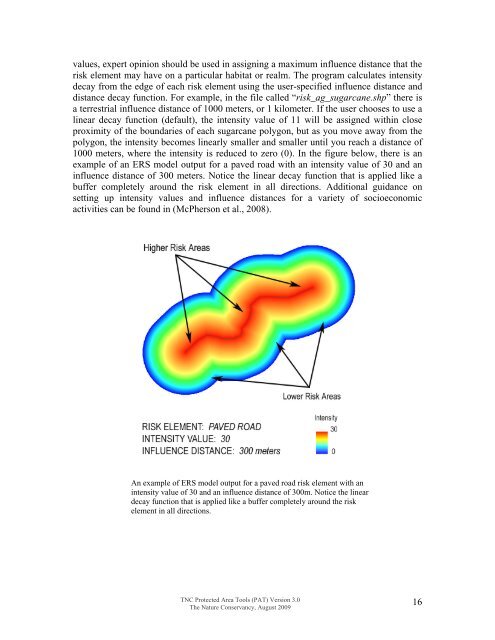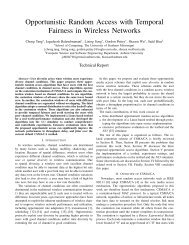Download the Tutorial
Download the Tutorial
Download the Tutorial
You also want an ePaper? Increase the reach of your titles
YUMPU automatically turns print PDFs into web optimized ePapers that Google loves.
values, expert opinion should be used in assigning a maximum influence distance that <strong>the</strong>risk element may have on a particular habitat or realm. The program calculates intensitydecay from <strong>the</strong> edge of each risk element using <strong>the</strong> user-specified influence distance anddistance decay function. For example, in <strong>the</strong> file called “risk_ag_sugarcane.shp” <strong>the</strong>re isa terrestrial influence distance of 1000 meters, or 1 kilometer. If <strong>the</strong> user chooses to use alinear decay function (default), <strong>the</strong> intensity value of 11 will be assigned within closeproximity of <strong>the</strong> boundaries of each sugarcane polygon, but as you move away from <strong>the</strong>polygon, <strong>the</strong> intensity becomes linearly smaller and smaller until you reach a distance of1000 meters, where <strong>the</strong> intensity is reduced to zero (0). In <strong>the</strong> figure below, <strong>the</strong>re is anexample of an ERS model output for a paved road with an intensity value of 30 and aninfluence distance of 300 meters. Notice <strong>the</strong> linear decay function that is applied like abuffer completely around <strong>the</strong> risk element in all directions. Additional guidance onsetting up intensity values and influence distances for a variety of socioeconomicactivities can be found in (McPherson et al., 2008).An example of ERS model output for a paved road risk element with anintensity value of 30 and an influence distance of 300m. Notice <strong>the</strong> lineardecay function that is applied like a buffer completely around <strong>the</strong> riskelement in all directions.TNC Protected Area Tools (PAT) Version 3.0The Nature Conservancy, August 200916
















